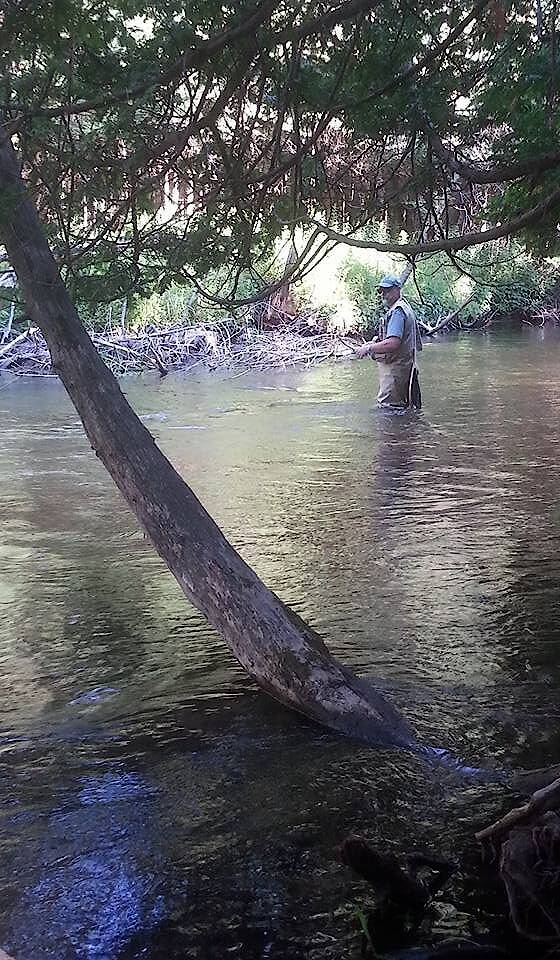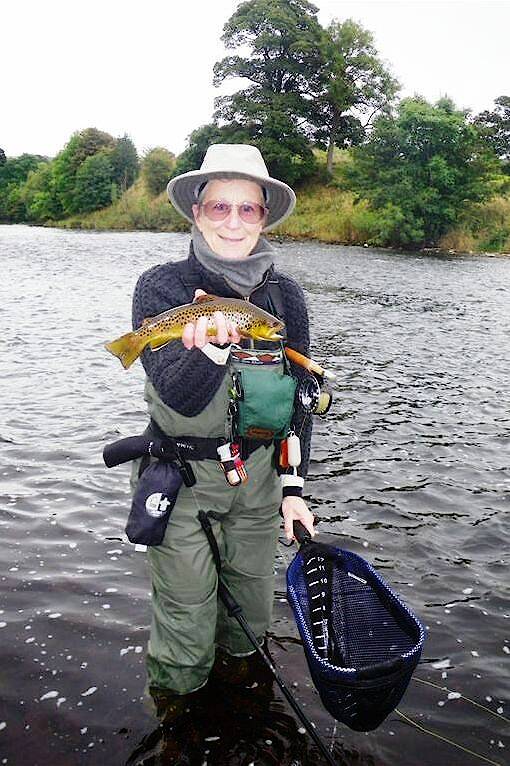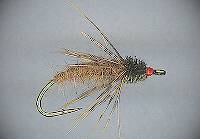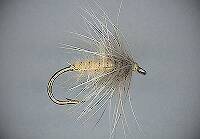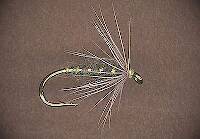
Blue-winged Olives
Baetis
Tiny Baetis mayflies are perhaps the most commonly encountered and imitated by anglers on all American trout streams due to their great abundance, widespread distribution, and trout-friendly emergence habits.
Featured on the forum

This species was fairly abundant in a February sample of the upper Yakima.

Troutnut is a project started in 2003 by salmonid ecologist Jason "Troutnut" Neuswanger to help anglers and
fly tyers unabashedly embrace the entomological side of the sport. Learn more about Troutnut or
support the project for an enhanced experience here.
Roguerat on Oct 8, 2017October 8th, 2017, 3:27 am EDT
I've been asked to work up a 1-hour tying demonstration for a Home School group of kids 4th through 6th grade age. After thinking it through I told the requesting teacher that an hour was nowhere near long enough for an individual, hands-on tutorial for 6-8 kids and that I was leaning toward instructional handouts instead along with a demonstration tying of each stage of a mayfly- nymph, dun, and spinner. The handouts would illustrate stages for stoneflies, caddis, and mayflies with relevant graphics and written material suitable for the intended audience. I may even work up handouts on types of flies such as streamers, hair-bugs, and the big stuff like Intruders and so on.
ANYWAY,
Has anybody on this site ever done anything similar and have tips or advice, critiques to share? Thanks in advance for any input here.
Crazy, I never saw this coming 30-some years ago when I started tying...my grandkids, yeah- and the older boys are really getting it- but teaching it to a 'class', not really.
somewhat lengthy post but this one's got me considering all the angles.
Roguerat
'Less is more...'
Ludwig Mies Vande Rohe
ANYWAY,
Has anybody on this site ever done anything similar and have tips or advice, critiques to share? Thanks in advance for any input here.
Crazy, I never saw this coming 30-some years ago when I started tying...my grandkids, yeah- and the older boys are really getting it- but teaching it to a 'class', not really.
somewhat lengthy post but this one's got me considering all the angles.
Roguerat
'Less is more...'
Ludwig Mies Vande Rohe
RleeP on Oct 9, 2017October 9th, 2017, 8:49 am EDT
Well, nobody else has taken a crack at this, so I will...
I've done a pretty fair number of these demos over the years and if there is one thing that sticks in my mind, it is that you might find that as many if not more of the kids will be interested in a demonstration of the craft/mechanics of fly tying than they will in any entomological information illustrated through the tying of a series of flies. That is to say, they be more interested in how you construct a fly (any fly); the various materials and basic techniques employed, etc. than they might be in how a nymph becomes a dun becomes a spinner.
Its happened to me a number of times...
This may mean you can tie a simple wooly bugger and then maybe help a few of the bravest or most self assured volunteers among them do likewise and get a standing ovation from all...:).
This approach might also better fit your time constraints.
Every situation is different, so there is no way of knowing until you either pitch the idea or just go ahead and do it. I wouldn't underestimate the power of the simple visual of simply putting all that stuff on that wee little hook and having it come out as a cool looking finished product. It's heavy on the creative process and kids often like that. Or at least this has been my experience.
I've done a pretty fair number of these demos over the years and if there is one thing that sticks in my mind, it is that you might find that as many if not more of the kids will be interested in a demonstration of the craft/mechanics of fly tying than they will in any entomological information illustrated through the tying of a series of flies. That is to say, they be more interested in how you construct a fly (any fly); the various materials and basic techniques employed, etc. than they might be in how a nymph becomes a dun becomes a spinner.
Its happened to me a number of times...
This may mean you can tie a simple wooly bugger and then maybe help a few of the bravest or most self assured volunteers among them do likewise and get a standing ovation from all...:).
This approach might also better fit your time constraints.
Every situation is different, so there is no way of knowing until you either pitch the idea or just go ahead and do it. I wouldn't underestimate the power of the simple visual of simply putting all that stuff on that wee little hook and having it come out as a cool looking finished product. It's heavy on the creative process and kids often like that. Or at least this has been my experience.
TNEAL on Oct 9, 2017October 9th, 2017, 1:00 pm EDT
Having done a number of classes over the year, I agree with Lee's perspective; especially with your age group. Having them come away with a rudimentary grasp of some basics will be plenty of fuel for those who are actually interested to progress.
Roguerat on Oct 10, 2017October 10th, 2017, 12:16 am EDT
Lee and Tim,
thanks for the wisdom here, I tend to ignore the KISS principle and want to throw as much information at them as possible...and a Woolly Bugger demo/tutorial is how I had the grand-kids start out, tied one myself then had the guys do their own with some judicious advice now and then.
again, good stuff, thanks.
Roguerat
'Less is more...'
Ludwig Mies Vande Rohe
thanks for the wisdom here, I tend to ignore the KISS principle and want to throw as much information at them as possible...and a Woolly Bugger demo/tutorial is how I had the grand-kids start out, tied one myself then had the guys do their own with some judicious advice now and then.
again, good stuff, thanks.
Roguerat
'Less is more...'
Ludwig Mies Vande Rohe
CaseyP on Oct 10, 2017October 10th, 2017, 1:39 am EDT
have to agree with the KISS principle. have often worked with larger (4-6 people) groups and usually use a simple bugger pattern such as a Golden Retriever--marabou, estaz, and a bead/conehead. and yes, if it's all girls, they tie it in pink because pink works, especially if you use pink thread.
BTW--use corks to handle the hooks before and after, and put the hooks in the vise yourself. little fingers get those class vises out out adjustment in a flash every time!
BTW--use corks to handle the hooks before and after, and put the hooks in the vise yourself. little fingers get those class vises out out adjustment in a flash every time!
"You can observe a lot by watching." Yogi Berra
Quick Reply
Related Discussions
Topic
Replies
Last Reply
1
Dec 23, 2017
by Roguerat
by Roguerat
4
May 14, 2012
by Crepuscular
by Crepuscular


